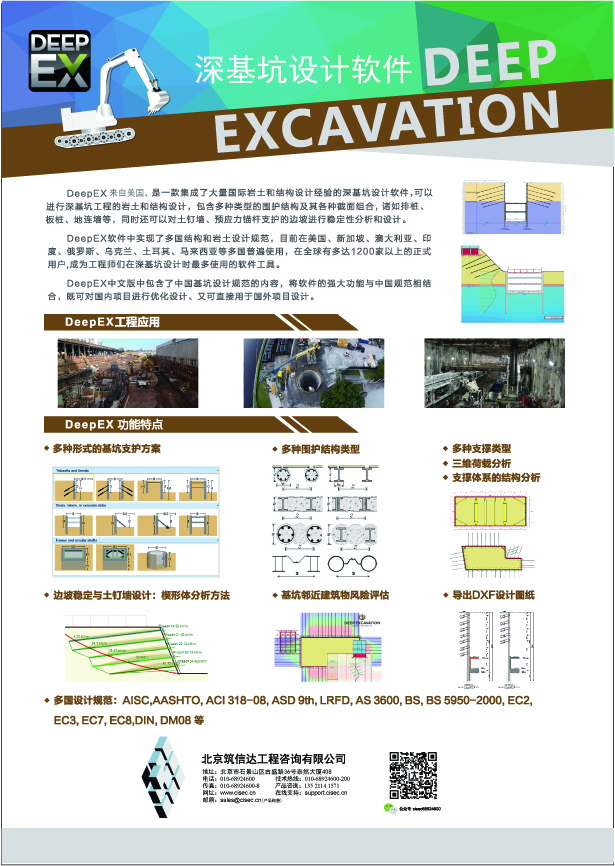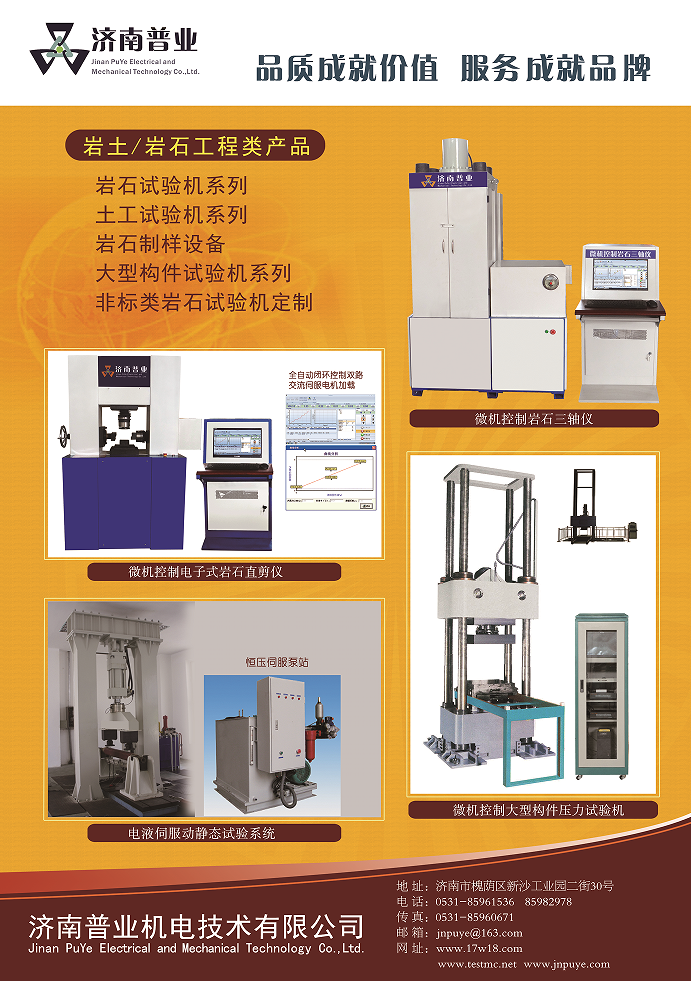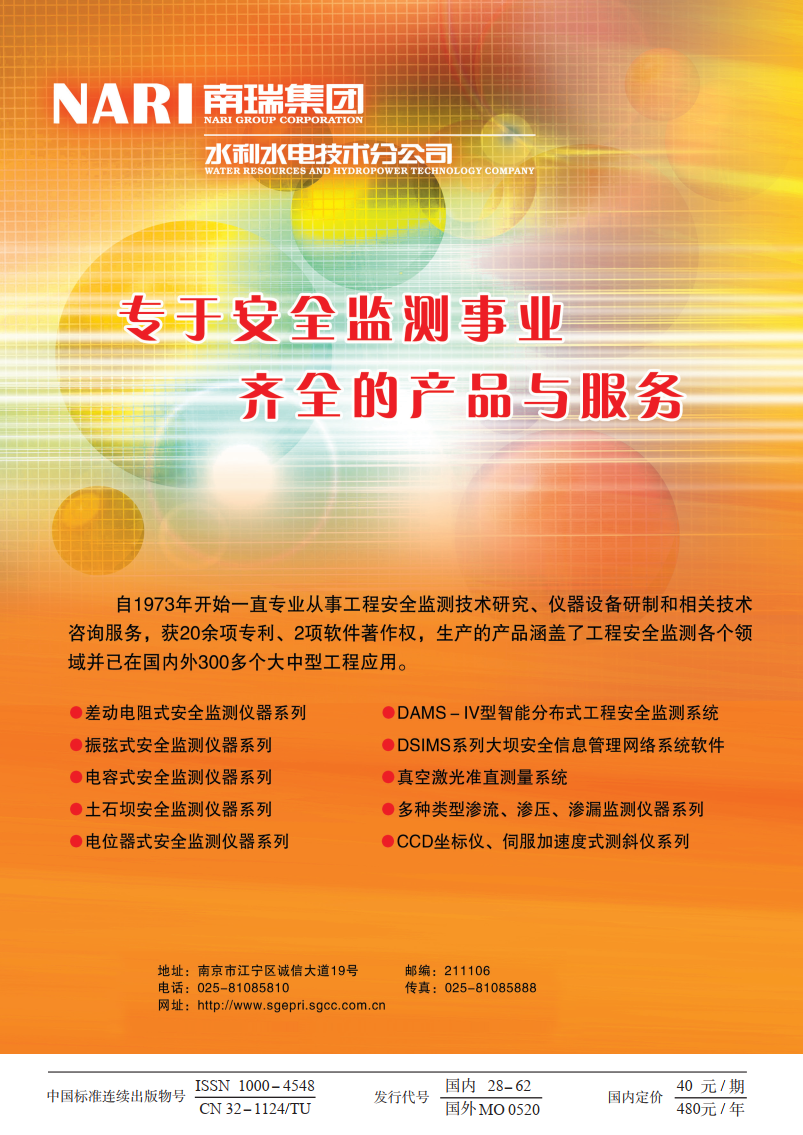| [1] |
CAI Z, BATHURST R J. Seismic-induced permanent displacement of geosynthetic-reinforced segmental retaining walls[J]. Canadian Geotechnical Journal, 1996, 33(4): 937-955
|
| [2] |
MATSUO O, TSUTSUMI T, YOKOYAMA K,,et al. Shaking table tests and analyses of geosythetic-reinforced soil retaining walls[J]. Geosynthetics International, 1998, 5(1/2): 97-126
|
| [3] |
SAKAGUCHI M A. Study of the seismic behavior of geosynthetic reinforced walls in Japan[J]. Geosynthetics International,1996, 3(1): 13-30
|
| [4] |
KOSEKI J, MUNAF Y, TATSUOKA F,,et al. Shaking and tilt table tests of geosynthetic-reinforced soil and conventional-type retaining walls[J]. Geosynthetics International, 1998, 5(1/2): 73-96
|
| [5] |
EL-EMAM M M, BATHURST R J. Experimental design, instrumentation and interpretation of reinforced soil wall response using a shaking table[J]. International Journal of Physical Modelling in Geotechnics, 2004, 4(4): 13-32
|
| [6] |
GB 50011—#2006铁路工程抗震设计规范[S]. 2006.
GB 500112006 Code for seismic design of railway engineering[S]. 2006. (in Chinese))
|
| [7] |
JTG/T B02—#01—#2008 公路桥梁抗震设计细则[S]. 2008 (JTG /T B02012008 Guidelines for seismic design of highway bridges[S]. Beijing: China Communications Press, 2008.
|
| [8] |
EUROPEAN STANDARD 1998 Eurocode 8: Design of structures for earthquake resistance part 5: foundations, retaining structures and geotechnical aspects[S]. 1998.
|
| [9] |
日本鉄道構造物の設計基準[S]. 1998.
Japanese railway installations design standards[S]. 1998. (in Japanese))
|
| [10] |
Transit New Zealand. Bridge manual plus amendment No. 1[S]. Wellington: Transit New Zealand, 1995.
|
| [11] |
KOSEKI J, HAYANO K. Preliminary report on dam age to retaining walls caused by the 1999 Chi-Chi earthquake, Bulletin of ERS[R]. Tokyo: Institute of Industrial Science, Univ of Tokyo, 2000, 33: 23-34
|
| [12] |
NEWMARK N M. Effects of earthquakes on dams and embankments[J]. Géotechnique, 1965, 15(2): 139-160
|
| [13] |
CAI Z, BATHURST R J. Seismic response analysis of geosynthetic reinforced soil segmental retaining walls by finite element method[J]. Computers and Geotechnics, 1995, 17(4): 523-546
|
| [14] |
BATHURST R J, EL-EMAM M M. Facing contribution to seismic response of reduced scale reinforced soil walls[J]. Geosynthetics International, 2005, 12(5): 215-238
|
| [15] |
HUANG C C, CHOU L H, TATSUOKA F. Seismic displacement of geosythetic-reinforced soil modular block walls[J]. Geosynthetics International, 2003, 10(1): 2-23
|
| [16] |
WHITMAN R V, LIAO S. Seismic design of gravity retaining walls[C]// Proceedings of the 8th World Conference on Earthquake Engineering, San Francisco, Calif, 1984: 533-540.
|
| [17] |
张建经, 冯 君, 肖世国. 支挡结构抗震设计中的2个关键技术问题[J]. 西南交通大学学报, 2009, 44(6): 321-325
ZHANG Jian-jing, FENG Jun, XIAO Shi-guo. Discussions on two key technical problems for seismic design of retaining wall[J]. Journal of Southwest Jiaotong University, 2009, 44(6): 321-325. (in Chinese))
|








 下载:
下载:
